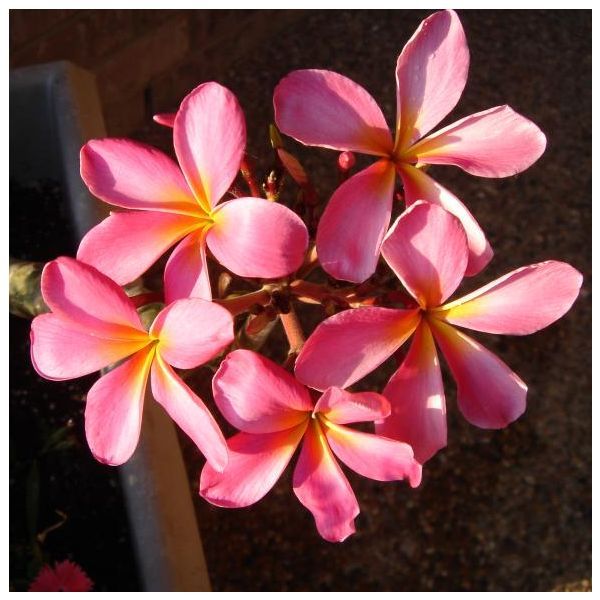Frangipani Seeds Mix (Plumeria)
Frangipani Seeds Mix (Plumeria)
Tropical flowering tree. Durable and fragrant flowers.

Delivery
All orders shipped with UPS Express.
Always free shipping for orders over US $250.
All orders are shipped with a UPS tracking number.
Returns
Items returned within 14 days of their original shipment date in same as new condition will be eligible for a full refund or store credit.
Refunds will be charged back to the original form of payment used for purchase.
Customer is responsible for shipping charges when making returns and shipping/handling fees of original purchase is non-refundable.
All sale items are final purchases.
Help
Give us a shout if you have any other questions and/or concerns.
Email: contact@domain.com
Phone: +1 (23) 456 789
Availability: In stock
SKU
Plumeria
The Plumeria, commonly known as Frangipani, is a tropical tree renowned for its exquisite and fragrant flowers. Its star-shaped blossoms come in vibrant shades of white, pink, yellow, and red, releasing a captivating fragrance that intensifies in the evening. Native to tropical regions of Central America and the Caribbean, Plumeria is highly valued for garden decoration, floral arrangements, and traditional Hawaiian leis. Easy to grow in warm climates, it can also thrive in pots in cooler regions, provided it is protected from frost.
| Common name | Frangipani |
|---|---|
| Species | Plumeria ssp. |
| Germination | First, fill small plastic trays or pots with your favorite potting soil. The seeds are almost flat, pale brown, 2.5 cm long with a fibrous tail. Before sowing, soak the seed for 2 hours in warm water, then sow 1/16 inche deep in a good, moist but not wet, free draining compost, leaving the wing sticking up. Pinch the soil against the seed to insure good contact. Seal in a polythene bag or cover with glass until germination. Finally, place them in a sunny location and let 'em grow. Keep the soil moist and they should germinate within 14-30 days at 21øC /70øF, it can be a little more, don't give up. Once the seedlings are well through, remove the glass or polythene bag progressively and place the seed container in a well lit, well ventilated place at a temperature of around 15-18øC (60-65øF). |
| Price View | Price Range |

